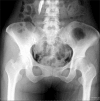Use of imaging agent to determine postoperative indwelling epidural catheter position
- PMID: 21217888
- PMCID: PMC3000621
- DOI: 10.3344/kjp.2010.23.4.247
Use of imaging agent to determine postoperative indwelling epidural catheter position
Abstract
Background: Epidural anesthesia is widely used to provide pain relief, whether for surgical anesthesia, postoperative analgesia, treatment of chronic pain, or to facilitate painless childbirth. In many cases, however, the epidural catheter is inserted blindly and the indwelling catheter position is almost always uncertain.
Methods: In this study, the loss-of-resistance technique was used and an imaging agent was injected through the indwelling epidural anesthesia catheter to confirm the position of its tip and examine the migration rate. Study subjects were patients scheduled to undergo surgery using general anesthesia combined with epidural anesthesia. Placement of the epidural catheter was confirmed postoperatively by injection of an imaging agent and X-ray imaging.
Results: The indwelling epidural catheter was placed between upper thoracic vertebrae (n = 83; incorrect placement, n = 5), lower thoracic vertebrae (n = 123; incorrect placement, n = 5), and lower thoracic vertebra-lumbar vertebra (n = 46; incorrect placement, n = 7). In this study, a relatively high frequency of incorrectly placed epidural catheters using the loss-of-resistance technique was observed, and it was found that incorrect catheter placement resulted in inadequate analgesia during surgery.
Conclusions: Although the loss-of-resistance technique is easy and convenient as a method for epidural catheter placement, it frequently results in inadequate placement of epidural catheters. Care should be taken when performing this procedure.
Keywords: epidural anesthesia; iotrolan; pain; postoperative; radiography.
Figures





References
-
- Liu S, Carpenter RL, Neal JM. Epidural anesthesia and analgesia. Their role in postoperative outcome. Anesthesiology. 1995;82:1474–1506. - PubMed
-
- Grass JA. The role of epidural anesthesia and analgesia in postoperative outcome. Anesthesiol Clin North America. 2000;18:407–428. - PubMed
-
- Burn JM, Guyer PB, Langdon L. The spread of solutions injected into the epidural space. A study using epidurograms in patients with the lumbosciatic syndrome. Br J Anaesth. 1973;45:338–345. - PubMed
-
- Mehta M, Salmon N. Extradural block. Confirmation of the injection site by X-ray monitoring. Anaesthesia. 1985;40:1009–1012. - PubMed
LinkOut - more resources
Full Text Sources
